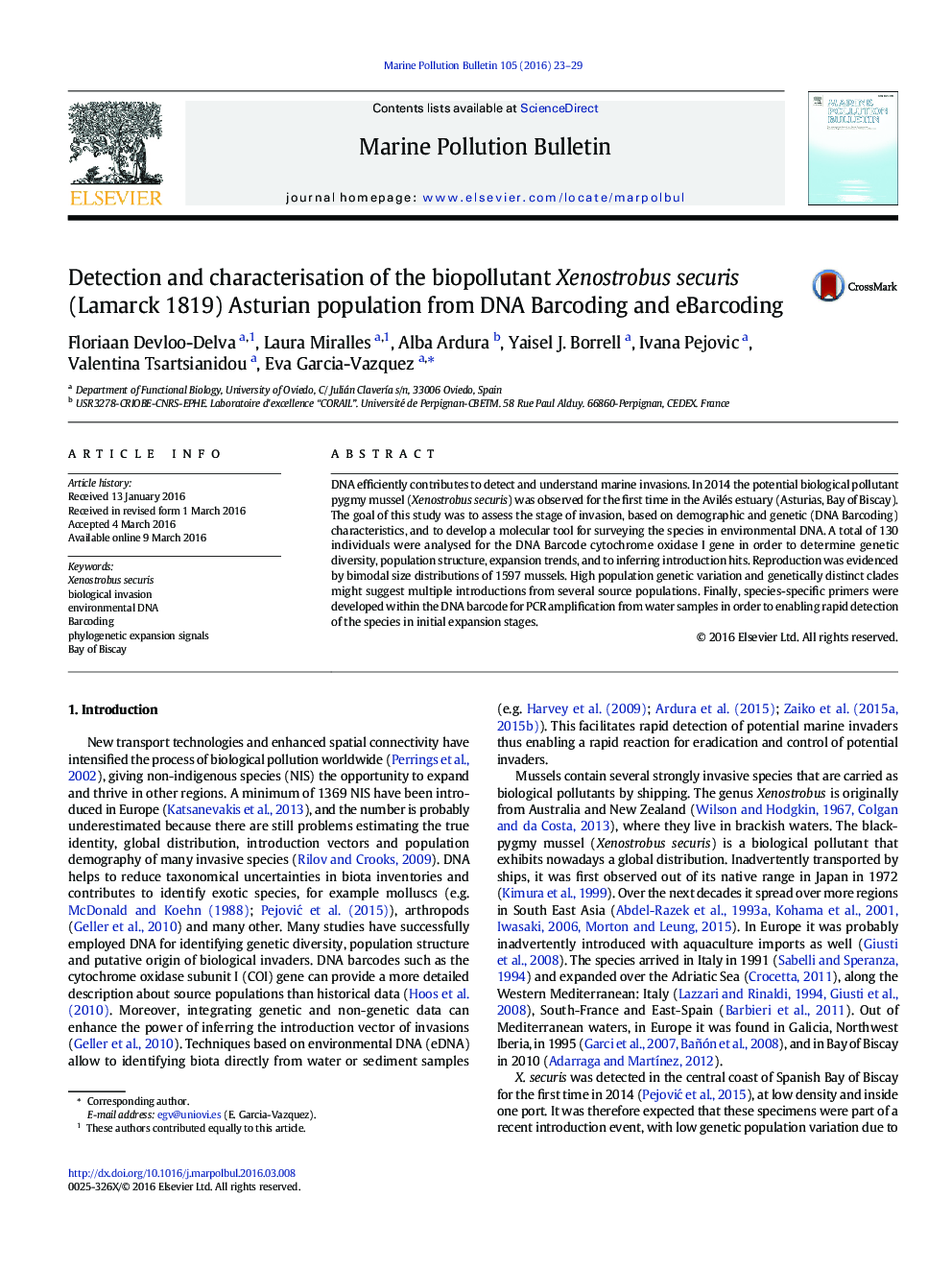| Article ID | Journal | Published Year | Pages | File Type |
|---|---|---|---|---|
| 4476510 | Marine Pollution Bulletin | 2016 | 7 Pages |
•Xenostrobus securis is an invasive species in the northern Hemisphere.•We describe a new population in the central north Iberian coast with evidences of multiple invasion hits.•A new species-species marker was developed based on the cytochrome oxidase I gene.•The new marker can be amplified directly from water where Xenostrobus securis occurs.•The new DNA marker can be used for early detection of Xenostrobus securis populations.
DNA efficiently contributes to detect and understand marine invasions. In 2014 the potential biological pollutant pygmy mussel (Xenostrobus securis) was observed for the first time in the Avilés estuary (Asturias, Bay of Biscay). The goal of this study was to assess the stage of invasion, based on demographic and genetic (DNA Barcoding) characteristics, and to develop a molecular tool for surveying the species in environmental DNA. A total of 130 individuals were analysed for the DNA Barcode cytochrome oxidase I gene in order to determine genetic diversity, population structure, expansion trends, and to inferring introduction hits. Reproduction was evidenced by bimodal size distributions of 1597 mussels. High population genetic variation and genetically distinct clades might suggest multiple introductions from several source populations. Finally, species-specific primers were developed within the DNA barcode for PCR amplification from water samples in order to enabling rapid detection of the species in initial expansion stages.
